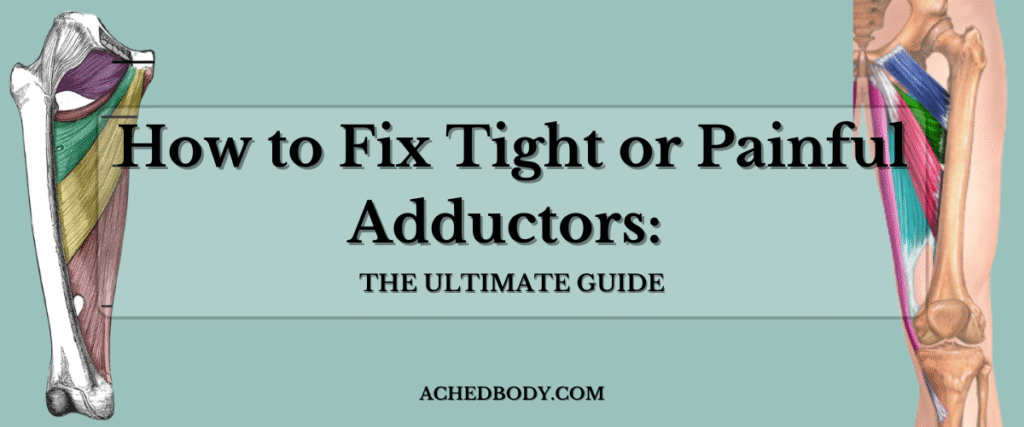
Fix Your Adductors – The Ultimate Guide
This is the ultimate guide to relieving tension in your adductors.
In it, you’ll learn everything you need to know to fix the underlying cause — not just treat the symptoms.
I’m going to start off with some basics, but feel free to skip to the actionable advice here.
What Are the Adductors?

The adductors are a group of five muscles along the inner thigh:
They are the adductor longus, adductor brevis, adductor magnus, gracilis, and pectineus..
These muscles help move your legs toward your body’s midline — a motion called adduction. But when they’re overworked or full of tension, they can cause:
- Inner thigh and groin pain
- Limited hip mobility
- Poor movement patterns and muscle compensation
Symptoms of Adductor Dysfunction
You may be dealing with an adductor issue if you experience any groin pain when walking, squatting, or lunging.
You can also feel inner knee pain, clicking or snapping in the hip, or general pain that doesn’t go away.
And this can be dangerous to live with because it can spiral into bigger issues like hip misalignment or recurring muscle pulls.
Step 1: Identify the Cause of the Tightness
Before you jump into treatment, it’s important to understand why your adductors are tight or painful so you can stop it from happening again after fixing the pain.
The main causes can be:
Sedentary lifestyle – because sitting shortens and stiffens the inner thighs
Muscle imbalance – because weak hamstrings, glutes or core can force the adductors to compensate.
Old injuries – that haven’t fully healed can reoccur and trigger points build up post-strain.
Poor form in training because repetitive poor biomechanics will overload these muscles over time and put them in a compromised position.
To get lasting relief, your recovery plan needs to address mobility, trigger points, and strength.
Step 2: Stretch the Right Way
Start with my list of adductor stretches to see if it helps relieve the tension. I have them arranged from easiest to perform to most difficult to perform.
These improve blood flow, reduce tension, and prep the muscles for deeper work.
If that protocol doesn’t give enough relief, you need to move to the next step.
Step 3: Release Trigger Points
If stretching alone isn’t helping, your pain may be caused by trigger points — tiny, knotted areas of muscle.
And if trigger points are in your adductors, this guide will show you how to find them.
It goes over how to use massage balls and foam rollers to relax the muscles before targeting them with a stretch.
When paired together, a trigger point and stretch session is the best combo to truly relieve tension in any muscle group.
Step 5: Rebuild with Strength
The final — and most often skipped — step is strengthening your adductors and the surrounding muscles through a full range of motion.
This requires more effort, but following a full range of motion adductor workout is the best way to rebuild healthy muscles.
Related Issues and Deeper Links
Tight adductors often manifest as hip or knee pain so if that’s the case for you, other muscle groups can also contribute to each problem.
Learn about how Tight Adductors Cause Hip or Knee Pain here and if that doesn’t work well, take a look at the hamstring caused knee and hip pain or the quad related hip and knee pain articles I have already.
If you go through stretching and trigger pointing on your adductors and still have pain in your adductors, you may need to test your glutes, hamstrings, quads, or even your calves for similar issues.
What’s Next?
Tight or painful adductors don’t need to be a lifelong issue.
Get to the root of it to restore movement, reduce pain, and get back to doing what you love.
Explore the full Adductor Relief Series:
- How to Stretch Your Adductors
- Foam Rolling the Inner Thighs
- Adductor Trigger Point Therapy
- Groin Pain, Hip Issues & What to Do About It
Or take a look at my Ultimate Guides to Stretching and Trigger Pointing to get every body part back where it needs to be. Pain-free, forever.
Good Luck!
-Nick